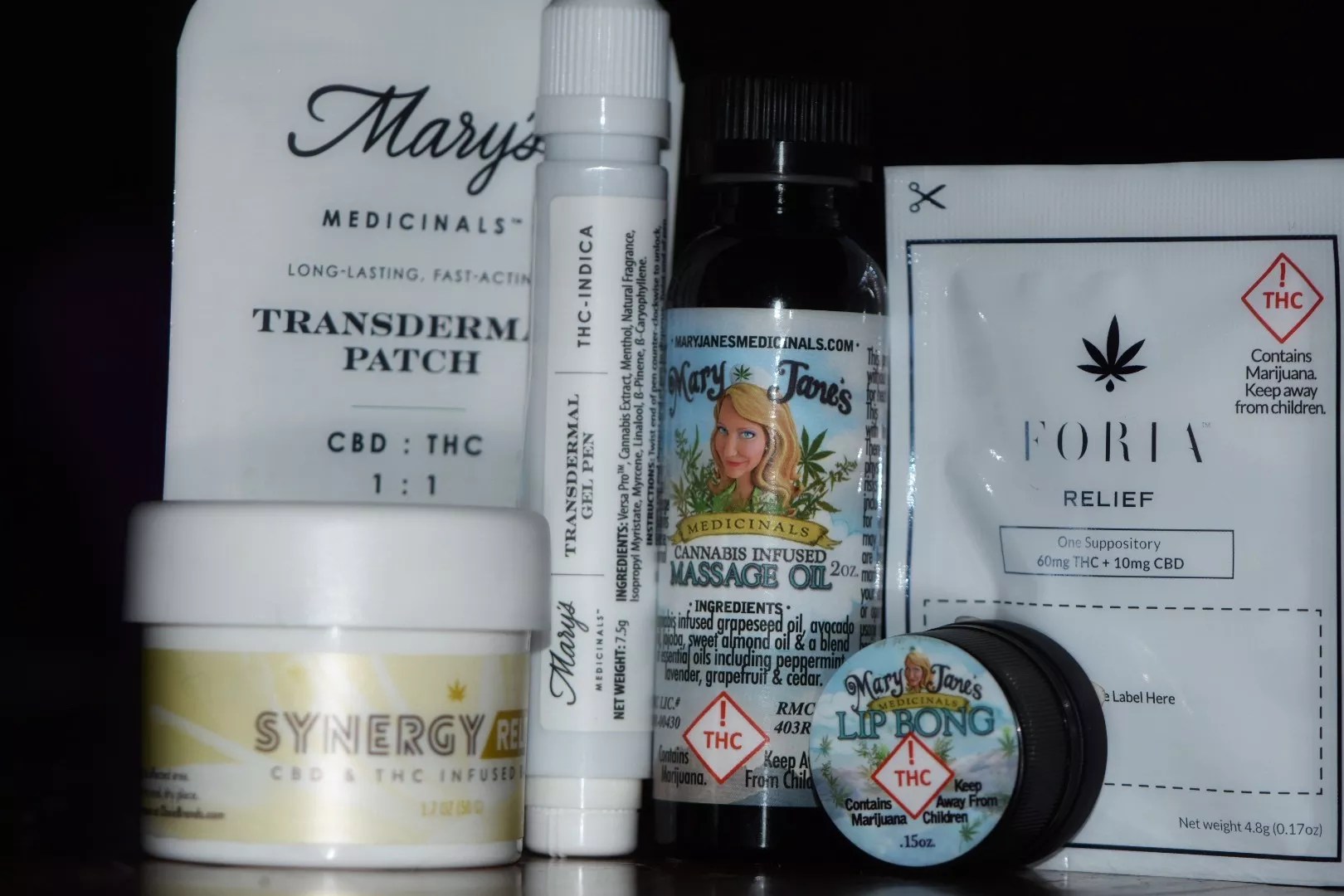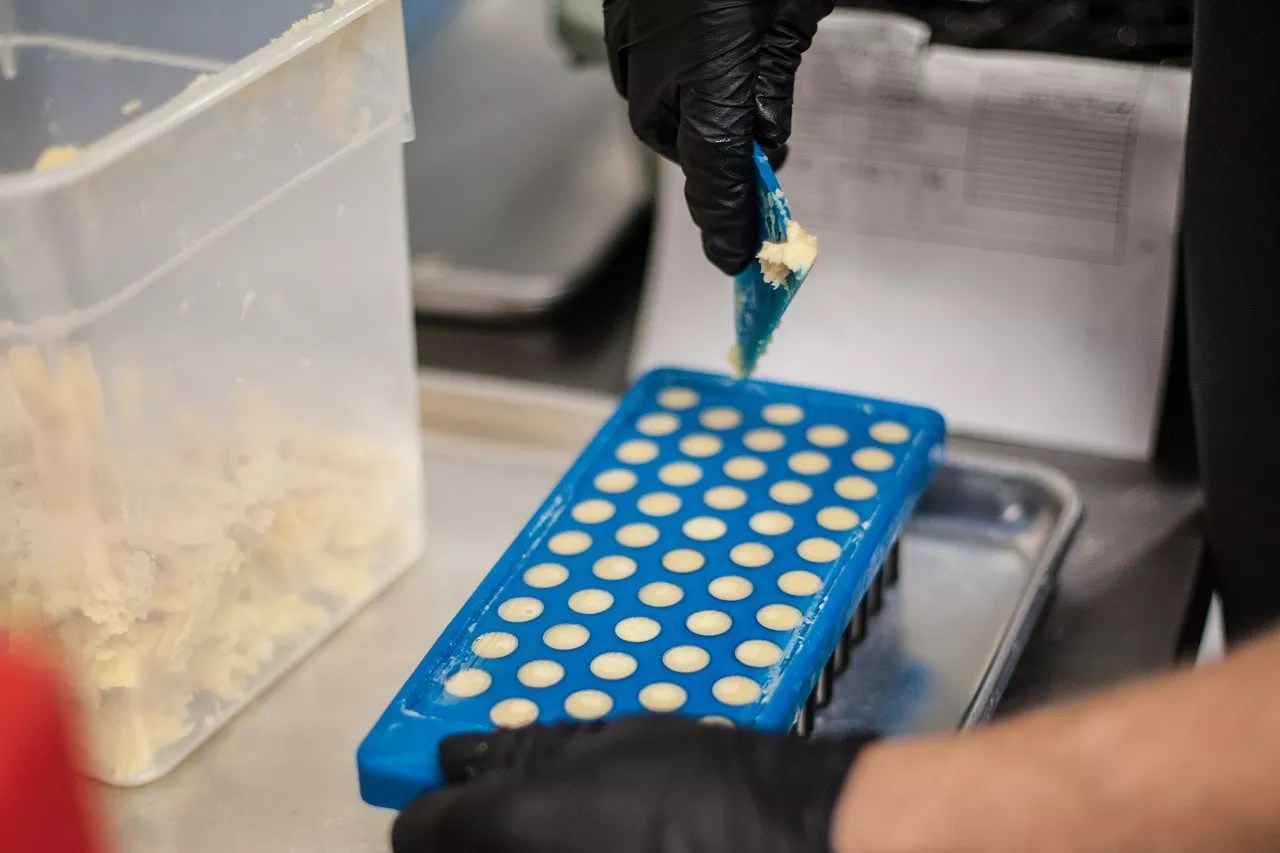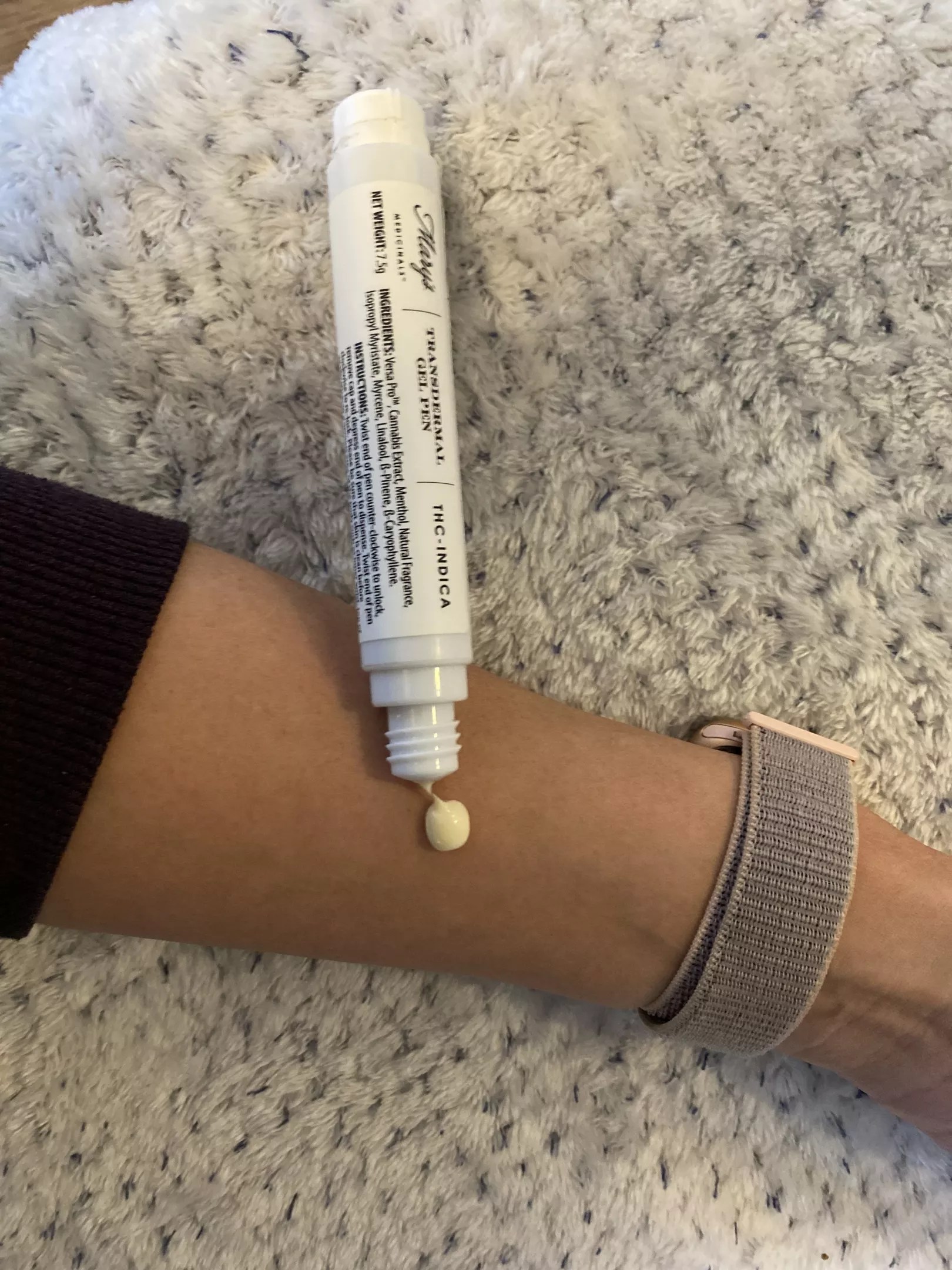
Amber Taufen

Audio By Carbonatix
We have officially reached the stage in society where the efficacy of cannabidiol (CBD) is so widely accepted that even the most basic multi-level marketing companies are hawking CBD hand cream. Infusing topical health and beauty items with hemp-derived CBD isn’t all that special in 2021; what’s more fun is the stuff with more of a, shall we say, euphoric effect.
In other words, it’s got THC in addition to CBD. It’s enjoying a topical product…on weed.
You won’t find THC-infused topicals being touted by pushy friends on Facebook. These products are typically made by infusing some kind of oil with cannabis; the cannabis bonds to the fats in the oil, which can then be used to create lotions, salves, balms, and so on.
Unless you’re making them at home, you’ll only find these THC-infused items sold alongside the edibles, flower and extracts at a marijuana dispensary. (Some stores carry a wider selection than others, so it pays to do some research before you jump in the car and head to the ATM.)
Denver, make your New Year’s Resolution Count!
We’re $10,000 away from reaching our $50,000 year-end fundraising goal. Your support could be what pushes us over the top. If our work has kept you informed and connected this year, please consider making a contribution today.
All of this prompts the question: Are you going to feel high after trying out a topical? You’ll likely feel something, from pain relief to relaxation, but you aren’t going to get the same head effect that smoking or edibles will elicit.
Some of that has to do with the delivery system from the skin into the bloodstream, which is inefficient if the goal is to get as weird as possible. And some of it has to do with product strength, as most of these aren’t especially strong – though there are some exceptions – and it would require a ton of lotion or salve to infuse your blood with enough THC to feel high.
Still, your skin can and does act as a transmission system. In very basic scientific terms, it’s a porous boundary that will (over time) allow substances to reach the circulatory system through the veins and arteries that travel under the skin. You can work to make that boundary more porous by doing things like taking a hot bath or a steamy shower before using massage oil, salves or lotions, which will open your pores wider for better absorption. You should also be mindful of where on your body you’re applying the products; especially “venous” (vein-carrying) areas like your wrists, the tops of your feet, behind your knees or the crook of your elbow are good places to dab topical gel or to place a transdermal patch for maximum effectiveness.
The amount of THC and CBD in these topical products ranges fairly widely, as does the product size. For example, Mary Jane’s Medicinals Lip Bong, a pun-filled infused lip balm, contains 9 milligrams of THC and 3 milligrams of CBD packed into a 0.15-ounce package, while Dixie‘s Synergy Relief boasts 50 milligrams of both THC and CBD in 1.7 ounces of balm. For recreational topicals, Mary Jane’s Super Strength Nano Salve was the strongest stuff we saw, with 500 milligrams of both THC and CBD in 3.3 ounces.
The use and application of cannabis topicals varies even more than the products, so where should you begin? We tried out some of Colorado’s most popular infused lotions, balms and rub-a-dubs to find out.
Lotions, Creams and Salves
The salves, creams and lotions proffered at dispensaries are made from the typical ingredients and infused with cannabinoids like THC and CBD. These types of products are designed (in part) to hydrate skin, so they’re general already made with fatty ingredients like oils and plant butters, even if they don’t have any THC or CBD. A carrier oil (usually unscented, like grapeseed oil) is infused with cannabis and then added to the salve, cream or lotion recipe, along with any bonus scents, plus more extracts and emulsifiers, like beeswax, arnica, aloe, Vitamin E or a number of other skin-boosting additives. When you slather it on, your skin will absorb all of the active ingredients in the product.
Cannabis lotions, creams and salves work nicely on concentrated areas of sore muscles or joint pain, including arthritis or an occasional knot in your back. The antioxidant properties in cannabis can provide relief from skin irritation, also. There is a wide range of strength options available, and you can use these products daily as part of a routine or spot relief. The packaging and product itself can be messy for on-the-go application, so you probably don’t want to keep this stuff in your purse, pocket or car for extended periods of time unless you’ve repackaged it into something more traditional.
You’ll find cannabis lotions, creams and salves from companies like Apothecanna, Colorado Cannabis Company, Mary Jane’s Medicinals, Dixie, Escape Artists, Mary’s Medicinals and Stratos.

Cannabinoid-infused lip balm is molded into a casing at Veritas Farms.
Jacqueline Collins
Lip Balm
Cannabis-infused oils are also used to make lip balm. Because the skin on your lips is thinner than most other places on your body, your mouth’s entryway is an especially good spot for infused topical products.
Cannabis lip balm is used for chapped lips, a common occurrence in Colorado’s dry climate, and cold sores, thanks to the antiviral properties in cannabis. Use your cannabis lip balm like any other lip balm – but keep a closer eye on it than your average Chapstick, since you can’t just replace it at any old grocery store or gas station.
Colorado Cannabis Company and Mary Jane’s Medicinals both make infused lip balms for sale at dispensaries, and hemp-derived CBD is available online.
Massage Oil
Already infused with essential oils for scent and effect (think lavender, peppermint and so on), cannabis-infused massage oil has become a common application for Colorado massage therapists.
Just like a salve, cream or lotion, massage oil is meant to be rubbed into your skin. But unlike a salve or cream, there aren’t any emulsifiers or plant butters to thicken the solution and help the oil stay in place while absorbed by the skin. On top of CBD or THC oil, essential oils, sweet almond oil, avocado oil or other standard massage options are also in the mix.
Infused massage oil is wonderful for muscle aches, joint pain, cramps and arthritis pain; it’s also typically pretty gentle and accessible for people who have skin sensitivities or irritation issues. To get the best effect, you’ll need a massage buddy to deliver the goods – they’ll get some of the goodness absorbed through their hands, and if you offer to return the favor, you’ll both get twice the enjoyment and the benefits.
Although CBD-only versions are easier to find and are carried by some massage therapists, we recommend mixing both cannabinoids together to get a fuller effect. Dispensaries currently carry cannabis massage oils from Colorado Cannabis Company and Mary Jane’s Medicinals, and you can find hemp-derived CBD oils online.
Transdermal Patches
Effective for the long run, transdermal patches are stuck on the skin and stay there for hours as cannabinoids slowly enter the bloodstream.
The sticky side of the patch contains acrylic, to help it adhere to your skin, while cannabis extract is mixed with other ingredients such as glycol and lecithin (liquefying and emulsifying ingredients) or eucalyptol for a tingling effect. It takes up to twelve hours for all of the ingredients in the patch to be fully absorbed.
Get the best results by thoroughly cleaning your skin and placing the patch over a wrist, foot, or another body part with copious access to your veins; you’ll also want to make sure you have the capacity to leave the patch on for at least twelve hours to ensure that you got everything you wanted out of it. Patches are ideal for scenarios like long travel days, when you know you’ll want some regular relief delivered over a period of time.
Mary’s Medicinals makes cannabis transdermal patches with varying amounts and ratios of THC and CBD; you can find them at dispensaries around Colorado.

Transdermal gels are easy to apply in a pinch.
Amber Taufen
Transdermal Gels
Typically more concentrated than the creams, salves or lotions available, transdermal gel is a super-hydrating blend that sinks through your skin to deliver infusions. Cannabis is added once again as an extract to the gel, and other ingredients like menthol can lend an extra zing to the experience.
Dab small amounts of gel on your pulse points using the pen-like device, then rub it into your skin. The gel is absorbed more quickly than a cream or lotion would be, so this is a good solution for skin irritations like eczema or allergy-based hives; it can also provide relief for repetitive strain-based muscle and joint stress.
If you’re looking for a mess-free (or mess-reduced) way to consume cannabis topically, this is something you can easily throw in your purse or your pocket (alongside your lip balm) and not worry about it leaking or releasing any pungent smells.
Mary’s Medicinals makes transdermal gel pens that are widely available across Colorado.
Suppositories
Your skin is porous all over your body, including the skin inside of your body. The oils and active ingredients in a suppository are absorbed through skin barriers that aren’t usually mentioned in polite society, so they’re actually quite efficient at getting cannabinoids inside the body. The cannabis is infused into oil, and then the oil is combined with cocoa butter before getting encapsulated in a plastic shell, which gets removed before use. When the suppository is inserted, the cocoa butter will reach body temperature and melt, releasing the oils onto the inner skin and then into the bloodstream.
These suppositories are specifically designed either for relief from pain or intimacy enhancement, but we’re just evaluating them for pain relief here. First, keep the suppositories in the freezer so they don’t melt. After removing the plastic covering, insert the suppository as far as you can, and then (ideally) spend ten to fifteen minutes supine (lying on your back) while you wait for it to dissolve. (If you’re using it for period pain, you’ll probably want to lean toward pads or period underwear until you’re sure that a tampon or cup isn’t going to interfere with your drug use.)
Foria makes cannabis suppositories for the recreational side, but the company’s current suppositories are being phased out and replaced with a similar product. Quiq, a new brand from Medically Correct, also sells cannabis-infused suppositories, but they’re only available for medical patients.